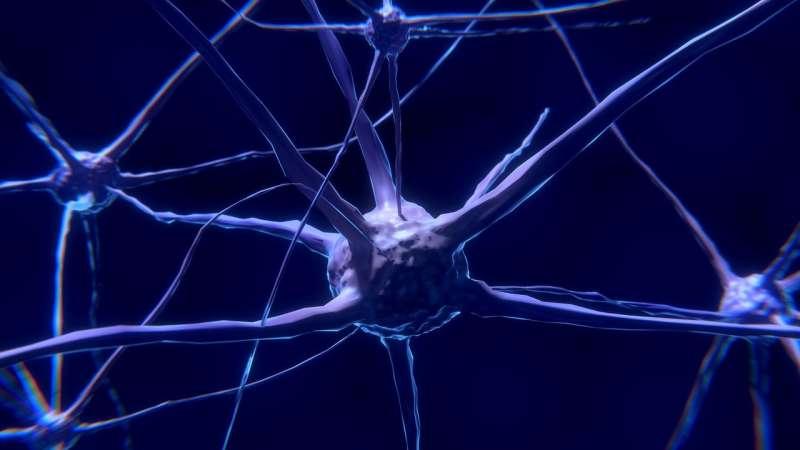Nerve cells use brain waves to judge importance

The precise interaction of brain waves and nerve cells may be decisive for the amazing ability of our brain to separate important from unimportant information, even when we are flooded with stimuli. Researchers at the University of Tübingen and the Technical University of Munich have been able to show through experiments on Rhesus monkeys that the exact point in time at which certain nerve cells discharge seems to play a key role in separating "the wheat from the chaff" in working memory. The findings will be published on Wednesday in the scientific journal Neuron.
At work, on the road or in the midst of a crowd – every day we are all exposed to situations in which we are confronted with a multitude of stimuli. Nevertheless, we act purposefully and safely in such situations. Our working memory seems to be able to effortlessly filter out relevant information and ignore the other, unimportant stimuli. In order to find out what is happening in the brain, the Tübingen researchers trained rhesus monkeys to separate relevant numbers, which they had to remember in a short time, from interfering numbers. During the experiment, the electrical signals of nerve cells in the cerebral cortex of the animals were measured using microelectrodes. The scientists observed that the simultaneous discharge of thousands of nerve cells caused large-scale oscillating fluctuations ("brain waves") in electrical brain activity.
Low frequency waves (known as theta waves) of four to ten cycles per second, proved to be particularly decisive. "We observed that both the relevant and the interfering information was transmitted in this theta frequency range," said Professor Andreas Nieder from the Institute of Neurobiology at the University of Tübingen. "However, the nerve cells responsible for the relevant information always discharged when the theta wave was at its lowest point. Contrarily, the nerve cells responsible for the disturbing stimulus always fired at the time when the theta wave was at its peak. We believe that the brain uses certain frequency channels to transmit information synchronously, but at the same time this wealth of information is also sorted according to whether it is important and unimportant during the transmission between brain areas," explains Nieder.
The leading author of the study, Dr. Simon Jacob, a neurologist at the Klinikum rechts der Isar at the Technical University of Munich, emphasizes the medical significance of the study: "Our results show that cognitive brain functions require precise interaction of nerve cells. It makes sense to use the mechanisms investigated in the animal model for therapeutic purposes in patients with memory disorders, for example by stimulating coordinated communication between the brain regions studied." Further studies will, however, be necessary to show whether the results of the study can be regarded as a general principle for how the brain processes cognitive information across separate areas of the brain.
More information: Evan G Antzoulatos et al. Synchronous beta rhythms of frontoparietal networks support only behaviorally relevant representations, eLife (2016). DOI: 10.7554/eLife.17822

















